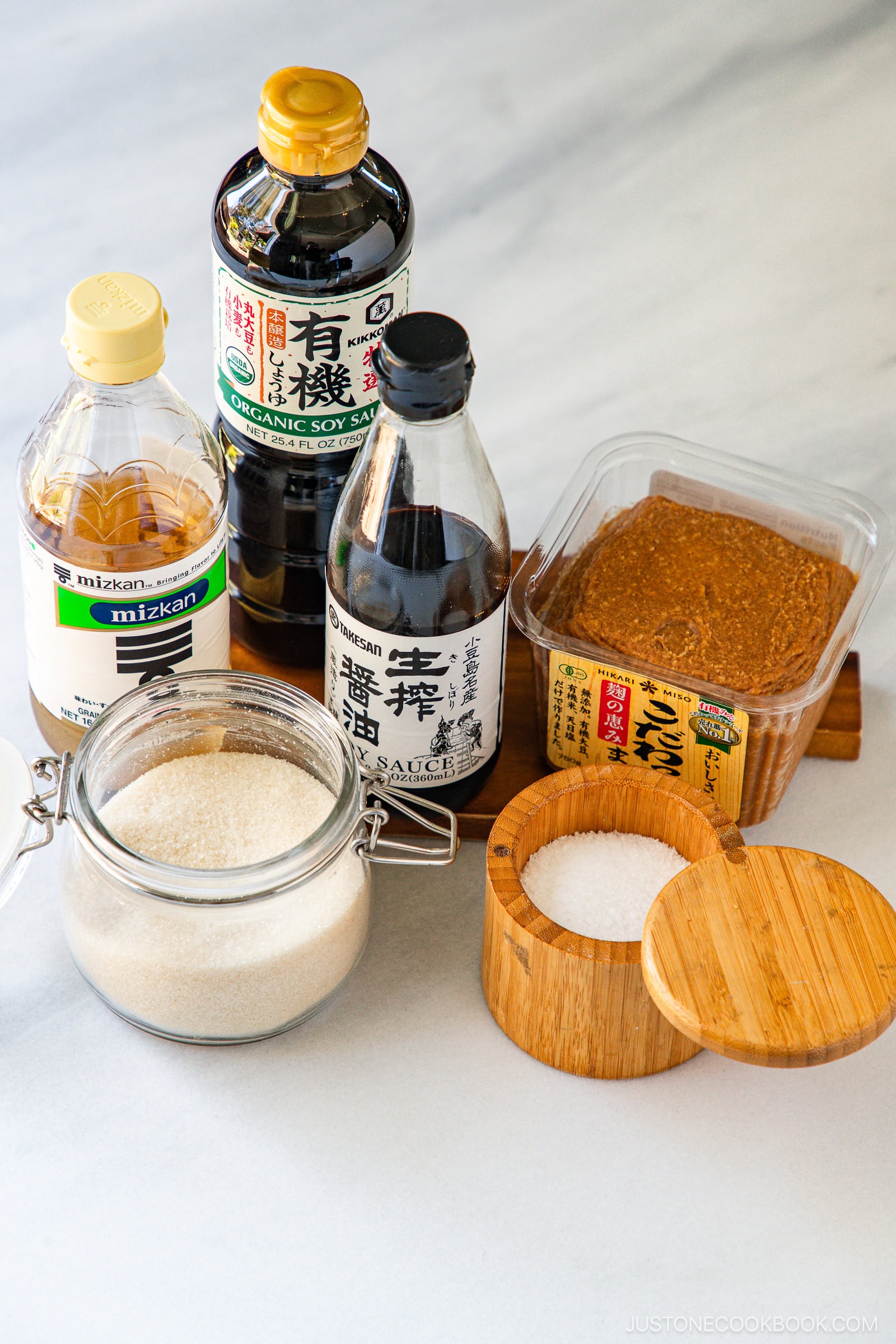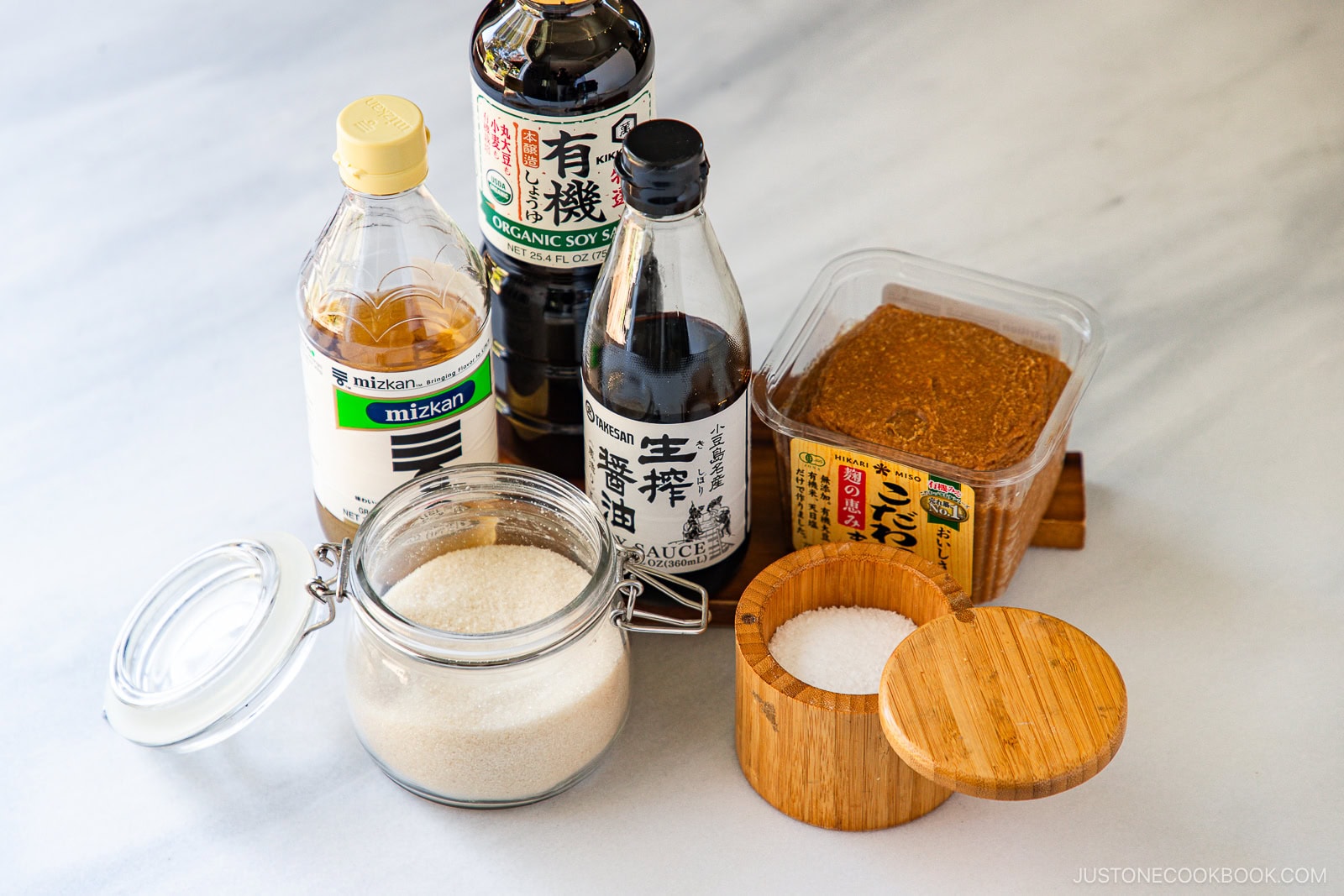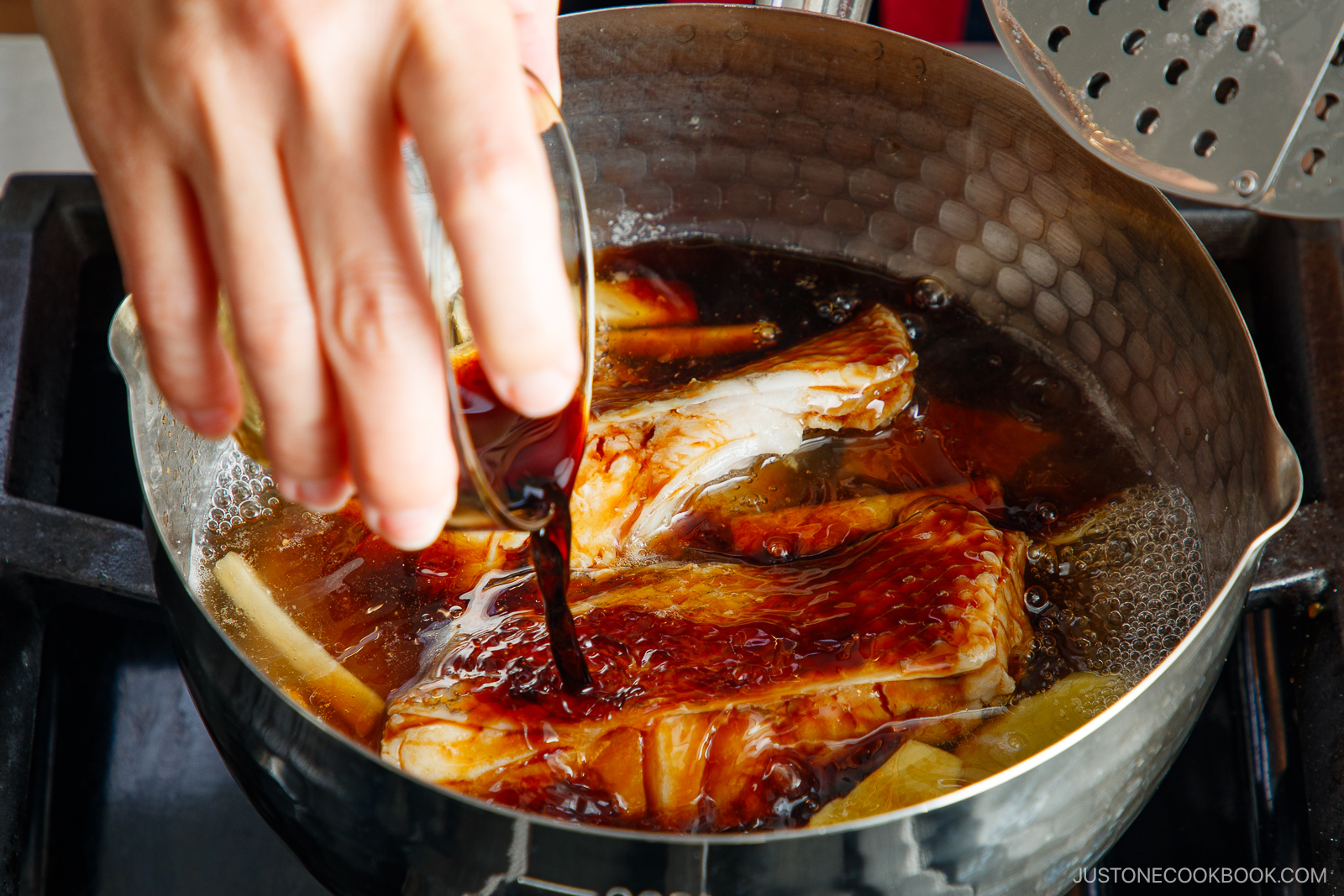Home cooks like me use Japanese alphabet letters to remember when to add sugar, salt, vinegar, soy sauce, and miso to the pot or pan. I’ll share why this “sa-shi-su-se-so” seasoning order matters and how to incorporate it in your own cooking.

Sa, shi, su, se, so (さしすせそ) are five familiar letters of the Japanese alphabet. Did you also know that it helps home cooks remember the ideal order for adding Japanese seasonings when cooking? Read on to learn why the order matters and how to use the sa-shi-su-se-so seasoning order in your own kitchen.
This traditional seasoning guideline is one of my five secrets to Japanese cooking. Read about the other four secrets next!

What is Sa-Shi-Su-Se-So Seasoning?
Sa, shi, su, se, and so are five letters of the phonetic hiragana and katakana Japanese alphabets that home cooks also use as a handy mnemonic device. Rooted in Japanese culinary wisdom, this syllable sequence reminds us of the optimal order for adding essential Japanese seasonings to enhance flavor and aroma when cooking. Here’s what each syllable represents:
- Sa = Sugar (sato, さとう)
- Shi = Salt (shio, しお)
- Su = Vinegar (su, す)
- Se = Soy sauce (shoyu, しょうゆ; traditionally called seuyu)
- So = Miso (みそ)
Why Does the Order Matter?

It comes down to how foods absorb flavor and how to preserve delicate aromas. Here’s a quick breakdown:
- Sugar (さ / sa) softens ingredients and adds sweetness, but it takes the longest to penetrate. That’s why it goes in first.
- Salt (し / shi) draws out moisture and seasons food. It blocks the sugar from soaking in, so we add it after.
- Vinegar (す / su) brightens dishes with acidity, but its sharpness fades if cooked too long. It’s best to add it a bit later.
- Soy sauce (せ / se) adds depth and a rich aroma. Cooking too long dulls its flavor and aroma, so add it near the end of cooking.
- Miso (そ / so) is delicate and packed with umami. Prolonged heat dulls its taste and aroma, so stir it in off the heat at the very end.
Frequently Asked Questions
Add sake early, before sugar. It helps tenderize. It helps tenderize ingredients and remove odors, and adding it early gives it time to work its way into the food.
Add sugar next, since it takes time to absorb and works best before salt or other seasonings.
It depends on the type of mirin you’re using:
Add hon-mirin early, before sugar and at the same time as sake. Hon-mirin means “true mirin” and is the traditional Japanese sweet rice wine that I use in my recipes.
Add mirin-like or mirin-fu condiments after miso toward the end of cooking to preserve its flavor and glossy finish. You can read more about mirin-style seasonings on my All About Mirin page.
Not at all! It’s a helpful guideline rooted in Japanese cooking tradition. If a recipe doesn’t give specific directions, it’s a great default to follow.
I’ll be honest—I often mix all my seasonings in a bowl and add them together when making quick, everyday meals. However, this traditional seasoning order works great for dishes like simmered or stir-fried meals, where you want the flavors to really soak in.


